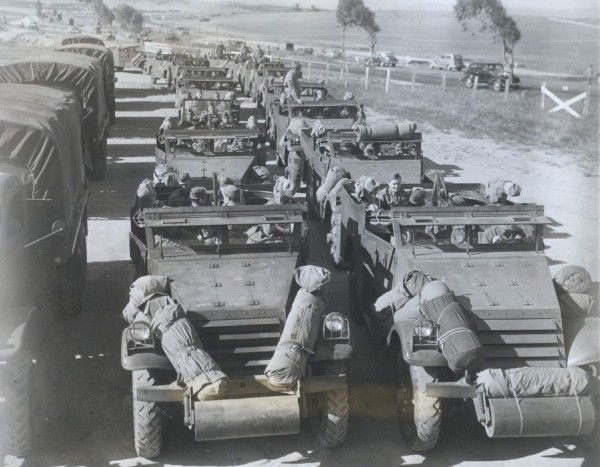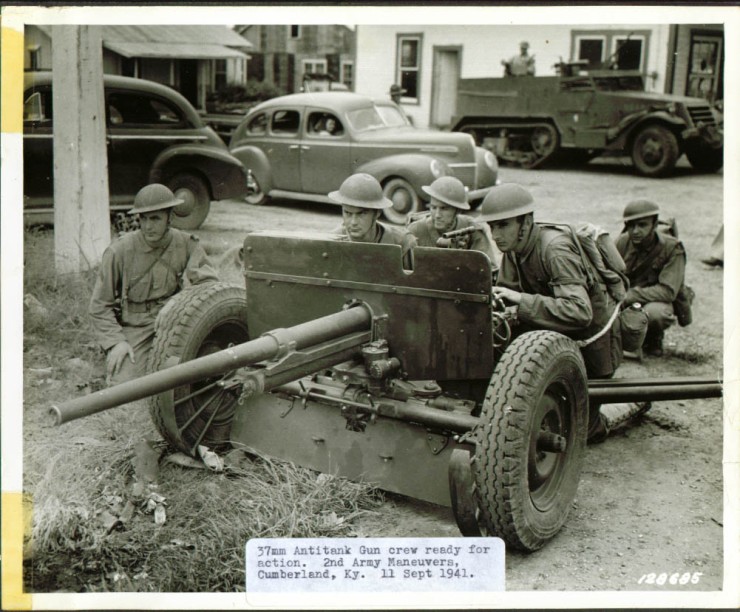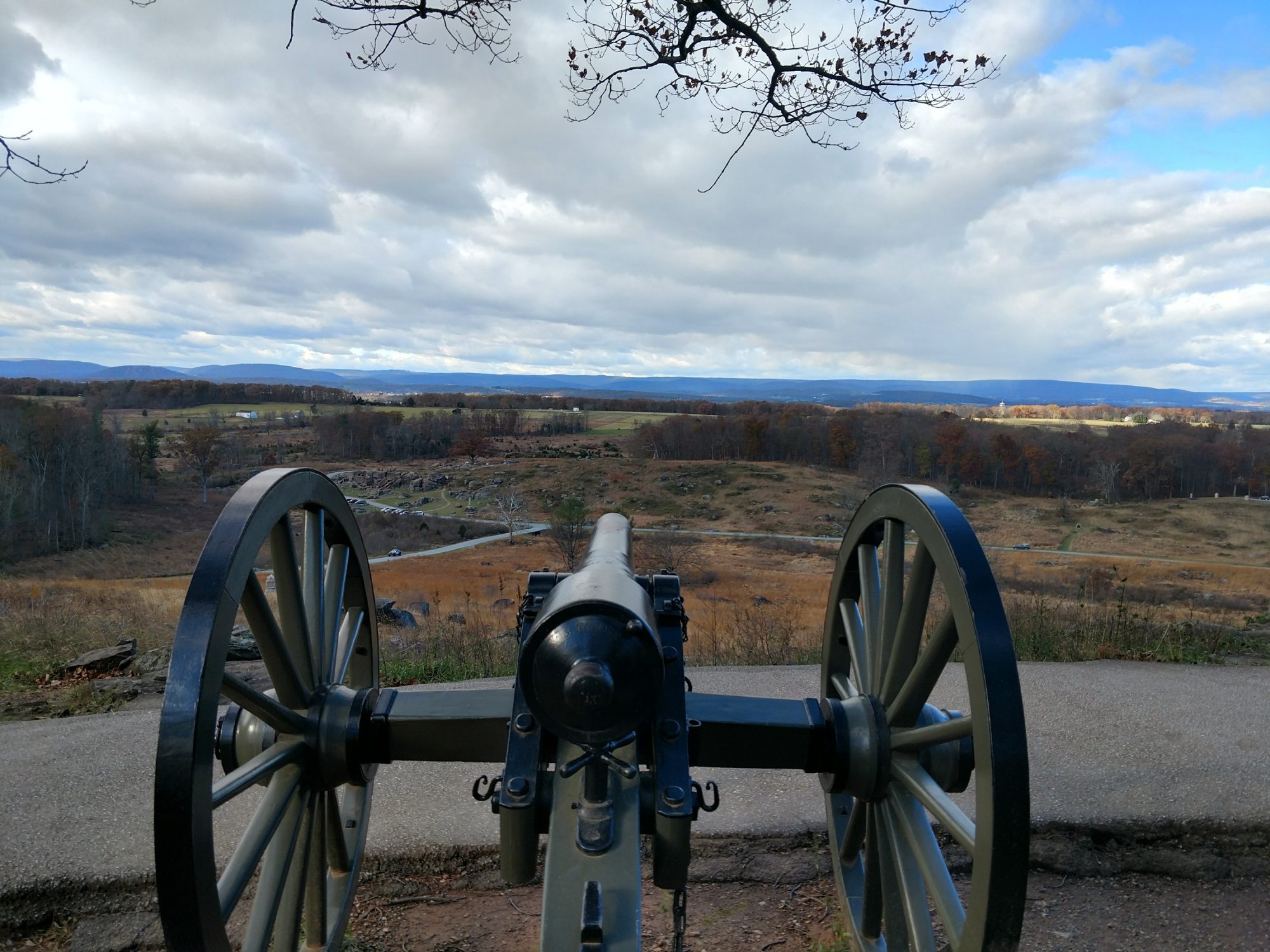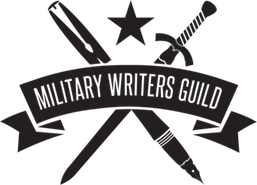Back in 1941, the Army did something extreme: it tested its doctrine. Not on tabletop wargames, not in a computer simulation, not with an invasion of a small Latin American country. No, the Army mobilized over 400,000 Regular and National Guard troops, spent a year training them up, and then let them fight each other across 30,000 square miles of Louisiana and Texas in an exercise that would make Jade Helm conspiracy theorists slaver with delight.
Why? Well, it was no secret that World War II would not remain a European affair much longer. The Germans had demonstrated that they had a pretty decent war machine, the likes of which the threadbare U.S. Army could only stare at longingly. The Army had been cut pretty badly after World War I. Pretty badly is an understatement. The Army had been gutted. From a wartime strength of several million men, it was reduced down below 80,000 by 1921. However, Army leaders had been smart; they knew that the next time war came, they would need adaptive and educated leaders. So the officers and non-commissioned officers that they could not retain were shifted over into the National Guard where they helped train up the nation’s reserve. The Army began service schools and professional development courses, open to both Regular and National Guard leaders. Although the Army would not be right-sized for the next conflict, or properly equipped with modern equipment at the outset, it would have a ready cadre of trained and adaptive leaders.
In 1940, the Army began preparing for possible entrance into World War II. Chief of Staff George C. Marshall – arguably one of the smartest men to ever wear pinks and greens – wanted to try something new: to take the latest doctrine and technology and actually try it out in force-on-force maneuvers between field armies of U.S. troops. He wanted to try it all, from armored tactics to air strikes to mechanized infantry. In essence, he wanted the largest NTC rotation the world had ever seen. And since this was back in the day when the Army still owned air power, it didn’t even need to be a joint operation.

General Lesley – yes, Lesley – McNair was chosen to be the Chief of Staff for General Headquarters (GHQ), U.S. Army. McNair formulated the training plan that is basically still used to this day: individual soldier tasks are trained first, then small unit training, and lastly a combined arms exercise to validate a unit’s proficiency. Soldiers first learned their basic tasks: land navigation, first aid, physical conditioning, and rifle marksmanship. Officers attended branch service schools. Then the soldiers went to work honing their small unit tasks, before graduating to combined arms field exercises with infantry, field artillery, and engineers. Once this was complete, regiments and brigades took part in four weeks of division training. The grand culmination was the GHQ Maneuvers in Louisiana, with divisions forming corps, and corps, field armies. Which then slugged it out in the woods and swamps with freedom of maneuver.
So what was this new doctrine and technology? Well, there was the tank, for one thing. Sure, it had been around since World War I, but Army doctrine maintained that tanks were there to support the infantry. Tanks would advance behind a rolling artillery barrage and allow the infantry to break through linear enemy defensive positions; shades of Verdun here. The Nazis had demonstrated that tanks could pretty much out-fight any infantry or artillery unit out there, and that, combined with close air support and mechanized infantry, they pretty much dominated the battlefield. There was no independent tank corps in the U.S. Army in 1940. Well, there wasn’t until Colonel George Patton, General Adna Chaffee, and General Bruce Magruder met together in a basement – I kid you not – and decided that America really needed its own armor corps. So they sent their proposal to Marshall, who liked the idea, and ordered the infantry and cavalry to turn over all their tanks to the Armored Force on July 10, 1940. Just like that, the armor branch was born, and with it came a new doctrine that needed to be tested.
And what of the cavalry, those Stetson-wearing sons of a whatnot? Well, one would like to think that they embraced mechanization gracefully. They did not. The cavalry arm was still a primarily horse-fighting organization in 1940, with limited jeeps and motorcycles for reconnaissance. Marshall urged full mechanization, which was strongly resisted by die-hard cavalrymen.

Another group that was proving irascible to doctrinal change was the Army Air Force. Rather than conforming to Marshall’s view that fighter-bombers should support combined arms operations, the Air Force had embraced strategic bombing with a myopia that was alarming, especially given that there was daily evidence from the Luftwaffe that air-to-ground close air support was a stunning success. The Army Air Force was also being recalcitrant to provide aircraft for the Army’s new 501st Parachute Battalion. Still, the airmen had modernized readily and were at least developing new doctrine, albeit focused on high-altitude bombing. It remained to be seen how this could mesh with ground operations.

All of this new training, new doctrine, and new technology would be tested in 1941. GHQ devised whole booklets of complicated rules on how the maneuvers would be run and how casualties would be assessed. Thousands of umpires traveled with units to assess their performance. All units were armed with blanks. Bombs were simulated with bags of flour. There were obvious flaws in the system. For example, any infantry within the vicinity of an enemy tank were ruled to have been wiped out. Conversely, light tanks could be destroyed by a .50 caliber machine gun at a range of 1,000 yards. Still, the maneuvers offered more benefits than drawbacks. Army, corps, division, brigade, and regimental commanders would be moving their forces in real time, experiencing the stress of command and control. Units would get used to the daily routines of combat: supply, movement, patrolling, offense, and defense.
Perhaps the greatest coup that the Army pulled off was to get state and local governments to buy into their plan. The Army leased and obtained trespass rights to 30,000 square miles of land from Shreveport to Lake Charles, and from Jasper, Texas to the Mississippi River. Bolstered by a Congress that finally placed defense spending as a priority, the Army had the land and the money to pull off the largest maneuvers – still the largest to this day – ever conducted in North America. Eighteen Army divisions and ten Air groups – combined Army and Navy – would face off against each other.

In the late summer of 1941, the long motor columns of troops and equipment swarmed into Louisiana. It was no small feat to organize supply networks for 400,000 men, but Army engineers built roads, railheads, depots, and barracks to accommodate the armies. Massive amounts of military brass and Army civilian leadership arrived as well, all wanting a look at how the modern U.S. Army was going to fight and win. Interestingly, the Harvard Business School even sent observers to see how the Army did logistics.
So what happened? Well, answers to that question varied by who you might ask. To the average grunt, the Louisiana Maneuvers meant more weeks of slogging through swamps and thickets with little to no sleep. To officers, it meant a chance to show their worth. And to senior leadership, it meant confirming or denying doctrinal assumptions. To advocates of armor or anti-tank units, it meant a time to show the worth of their new combat arm. Marshall was succinct: “I want the mistake [made] down in Louisiana, not over in Europe, and the only way to do this thing is to try it out, and if it doesn’t work, find out what we need to make it work.”
Everything kicked off on September 15. The Red Army received orders to invade the Blue Army’s territory. The orders were concise and basic: invade, seize key territory, and destroy the enemy. It was left up to army and corps commanders to devise the plan, and to division and brigade commanders to execute the plan. The Red Army had a secret weapon: George Patton and his tanks. But the Blue Army had a secret weapon of their own: their chief of staff was Colonel Dwight D. Eisenhower.

Things kicked off with predictable uncertainty. Commanders struggled with fording rivers and gaining air superiority. Rates of march by supposedly “slow” infantry units were accelerated when they were loaded into the trucks from the artillery and quartermaster corps. Eisenhower’s planning abilities showed as he fought a fluid and developing battle, while his opposite number tried to stick with the original plan for the Red Army. Adding to the chaos was a live airdrop of Company A, 502nd Parachute Battalion, which went on a daylong rampage, even raiding the Red Army’s headquarters before they were all “killed.” Red tanks fell victim to Blue anti-tank units at every turn, as they failed to support their armor with infantry. The “battle” ended on September 18, with a Blue Army victory. Both sides learned valuable lessons: battle was fluid and plans had to change as the situation did; air superiority was more valuable than anyone could have ever expected; armor had to have infantry support; and mobile anti-tank units were a must in every division. With these lessons in hand, Phase 2 of the Louisiana Maneuvers began.

The whole battle opened with one of the most ridiculous and fantastic episodes of combat engineering ever. With the Blue Army attacking, the Red Army’s engineers “blew up” every single bridge on their front. They even sent suicide squads to float down rivers inside the Blue Army’s lines and blow up bridges behind Blue forces. They placed over 900 obstacles in the Blue Army’s path, slowing their advance. When Blue engineers went out to repair bridges, special strike groups from the Red Army would hit them, force Blue troops to deploy for battle, and then retreat. Still, Blue Army, which greatly outnumbered the Reds, slowly advanced. Red Army pulled back again, creating a distance of forty-five miles – forty-five miles of blown bridges, cratered roads, and hundreds of more obstacles. The Red Army eventually halted to fight a defense. This was a mistake; when the maneuver had reset, Blue Army had gained Patton and his armor. Eisenhower planned a daring combined arms assault, sending Patton on an end run through Texas. Patton’s relatively small force drove twenty-four hours straight – Patton purchased fuel from local sources when he outran his supply lines – and appeared unexpectedly on the Red flank. For the duration of the battle, Patton’s force ran roughshod over Blue forces. However, the maneuvers ended before history would ever find out if Patton’s small force could have succeeded or if he would have been wiped out. One thing is sure: the partnership of Eisenhower and Patton made for a deadly combination.

The GHQ Maneuvers of 1941 would continue into the fall, now in the Carolinas. In the interim, the Army began removing or replacing commanders who were either too old or too ineffectual for wartime service. The maneuvers gave concrete evidence for the need for innovative, adaptive, and thinking leaders. Younger officers who showed promise were given more responsibility. The Army was setting the cast of characters who would run the show in World War II.
There were many takeaways. The Maneuvers warmed the Army Air Force to the idea of air-to-ground integration. And ground commanders became acutely aware of what could happen if they persisted in moving in thick columns along the roads in the daytime. The Army learned that infantry and armor units needed to work together, but also that “end runs” of fast moving armor could pay off in huge dividends. The horse arm of the cavalry was deemed to be inferior to mechanized troops, something that had been true since 1918, but that the cavalry refused to acknowledge. Division force structure was rearranged to create more combined arms units. Deficiencies in small-unit training and execution were discovered, and remedial programs for retraining developed. The Army implemented infantry and artillery platoon, company/battery, and battalion tests, to ensure proficiency. The focus became a “back to basic” approach, and at not a moment too soon: four days after McNair and Marshall delivered the Army’s assessment of the GHQ Maneuvers to Congress, the Japanese attacked Pearl Harbor and the U.S. entered World War II. It is no exaggeration to say that the GHQ Maneuvers of 1941 built the Army’s doctrine and force structure for World War II.

Fast forward to today. The Army is emerging from two low-intensity wars fought against unconventional forces and is refocusing to be able to counter a conventional threat. New technology, from unmanned vehicles to weapons to targeting systems, is rife across the Army. A new “battlefield” has emerged in the cyber realm. Doctrine has just been updated and new training doctrine is on the way. New relationships between Active, National Guard, and Reserve units are in the works, with a return to the “Roundout Brigade” concept. Combat units are now open to women. In short, the Army is undergoing dramatic changes as it shifts to meet conventional aggressors.
It is time for another GHQ Maneuvers.
As Marshall pointed out, it is better to see deficiencies in training than it is to see dead soldiers in combat. Have current corps and division commanders have ever led their forces as part of a conventional force-on-force engagement? Have brigade combat team commanders maneuvered their elements alongside like-sized brigades? Can the Army show that it is prepared to fight on land, air, and in cyberspace against a near-peer force? The answer to all of this is, “no.” Sure, combined arms exercises at NTC and JRTC serve to validate units’ readiness at lower levels, but moving beyond more than one or two brigades brings a complexity the type of which we have not seen in decades. Our leaders and soldiers are proficient at low-intensity warfare, from experience, but we lack the depth that comes from a massive exercise or actual conflict.
The time to do this is now.
For further reading on the GHQ Maneuvers, see “The U.S. Army GHQ Maneuvers of 1941”
Enjoy what you just read? Please share via social media using the buttons below.




This is a great story, thanks for telling it. The hex and counter geek in my wants a two map, 1500 counter war-game of this, but I doubt it would take on Kickstarter. More’s the pity.
I liked the last photo – US troops in British helmets always makes me smile.
LikeLiked by 2 people
Great article. I have known about the Lousiana Manuvers for a while I I agree that we need to test ourselves again. If only people wouldn’t freak out at the slightest mention of something like this.
LikeLiked by 1 person
There was more intellectual readiness in the US Army officer corps before the LA maneuvers than most history credits. See the interim Field Manual on the Mechanized Division used at Fort Leavenworth form 1937 onward. Also see the weapons development/R&D if not procurement of all the major weapons systems of WWII in the 1920s and 1930s, and the discussions about mechanization and motorization both in the schools and in the branch journals throughout the interwar period. We as an officer corps were as ready in 1941 as we have ever been for the changes emergent from actual combat. That we used the May 1941 version of the Field Service Regulations without significant change until 1947 is proof. Even more proof is that the system of combat in the FSR was effectively unchanged from the 1923 FSR!
Pete Schifferle, author America’s School for War
LikeLiked by 2 people
Excellent article. Your analysis is spot on. And yup, it is dumb to plan a new Louisiana Maneuvers. There is still plenty of land we could use. One of the great values of the old REFORGER exercises was how id live trained and exercised staffs brigade through Army.
One additional side note. The Army was appointed the lead agency for administering the Civilian Conservation Corps. While there was no military training there was an organization and training of working together an emergent leaders were made team leaders. Reserve Officers were placed in charge of CCC Companies and gained value command experience. Later, when conscription started in 1940, CCC alumni quickly found themselves appointed corporals and sergeants in their new units since they had a modicum of organizational and leadership skills learned in the CCC. George Marshall was a big proponent of the program and was a strong believer.
On a private note, my uncle was in one of the first CCC classes. After his time in the CCC he finally qualified for the Navy. He excelled so much that he was allowed to go to Navy Flight school as an enlisted man (there were a LOT of enlisted pilots pre-WW 2 across the board). He became a Naval Aviation Pilot with a rating of NAP 2/C (Army sergeant equivalent) in 1936 and retired a full commander in 1965 with 30 years. He always saw the CCC as the bedrock for his success.
So to riff of your point…time for a new CCC? I can give you a lot of places where there would be a great return on this investment in human capital.
LikeLike
Thanks for this, interesting reading. From an Anglo-centric perspective, it is fascinating to see the parallels between US and British armed forces in the inter-war years. Germany was in a similar situation prior to rearming. US had the luxury of moving to a war footing and learning these lessons on a impressively large training ground. The British learned them the hard way in France and North Africa. Air-Land integration was a feature of Joint operations between the Desert Air Force and Montgomery’s 8th Army before El Alamein as was the inception of combined arms Brigades. No surprise that some of the best units and most talented commanders were ripped out of the 8th Army and brought to Britain to start training for the invasion of Europe.
It used to be remarked that Waterloo was won on the playing fields of Eton, could it be said that from a British perspective, the Normandy campaign was won on the battlefields of North Africa. ‘Monty’ has a mixed press across the pond and I know that Operation Goodwood failed, but I do believe that the pressure applied in the East played a part in limiting the Germans’ ability to manoeuvre against the US break-out near St Lo.
Montgomery Eisenhower and Patton were visionary leaders whose presence at the head of the allied forces in Europe was more than coincidence.
Post Afghanistan, our Army has shrunk and we have thus far failed to grow the Reserve to a level that compensates for the reduction in our Regular Force. I always had concerns about the idea of training for ‘the war’ at the expense of training for ‘a war’. Our new structure seems to make it unlikely that we Brits will be able to stand alongside our American brothers and sisters when the US does reconstitute to counter a conventional threat. It is a shame and it is shameful.
LikeLike